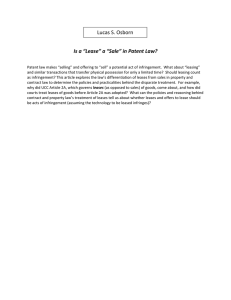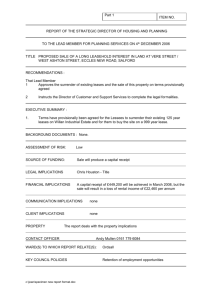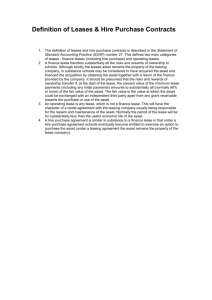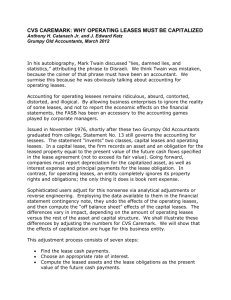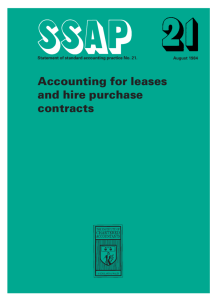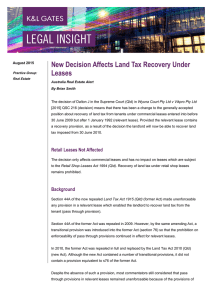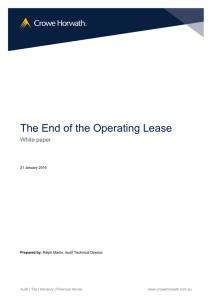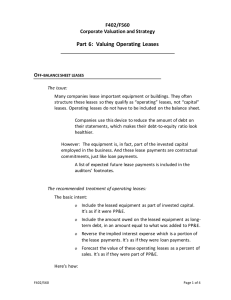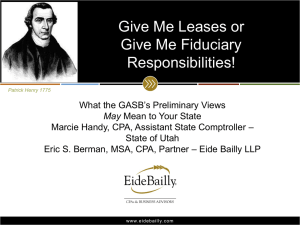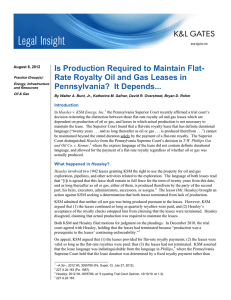LEASES - NYU Stern
advertisement
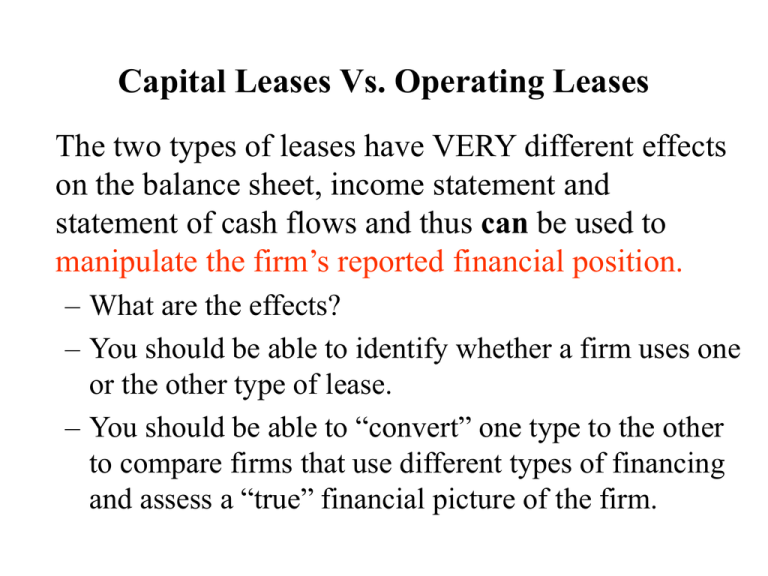
Capital Leases Vs. Operating Leases The two types of leases have VERY different effects on the balance sheet, income statement and statement of cash flows and thus can be used to manipulate the firm’s reported financial position. – What are the effects? – You should be able to identify whether a firm uses one or the other type of lease. – You should be able to “convert” one type to the other to compare firms that use different types of financing and assess a “true” financial picture of the firm. Types of Leases • Operating Leases: No transfer of the risks and benefits of ownership • Capital Leases: Transfer of the risks and benefits of ownership Capital Lease Conditions • • • • A lease is a capital lease if it meets at least one of the following conditions: Lease period is 75% of the asset’s useful life PV of the lease payments is 90% of the market value of the asset Bargain purchase option Transfer of ownership to lessee Operating Leases • No asset or liability – if you didn’t get the risks and benefits of ownership you shouldn’t show a liability or asset. • Rent expense reduces net income and is an operating cash outflow Capital Leases • Record an asset and a liability in the amount of the present value of the future lease payments – You received the risks and benefits of the asset, so treat the transaction as if you financed the purchase with debt. • Amortize the asset (NOT a cash outflow!) • Show interest expense (operating cash outflow) and principal payments (financing cash outflow) on the liability Converting Operating Leases to Capital Leases Why do this? • Firms that use operating leases ultimately have the same usable resources and financial obligations as those using capital leases. • The obligations should be shown!
